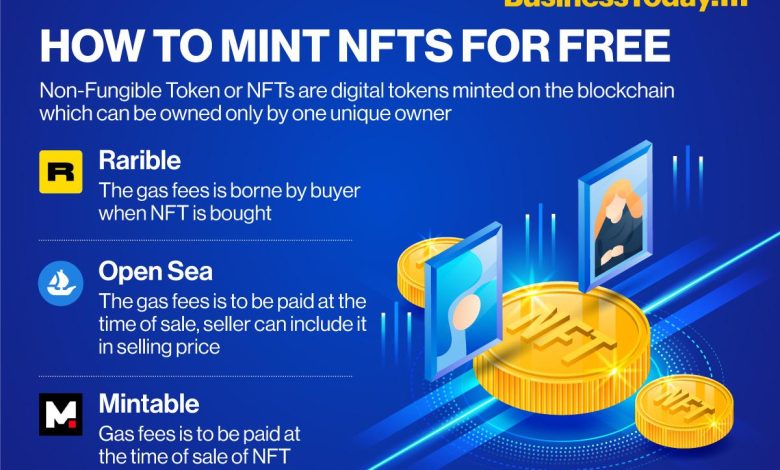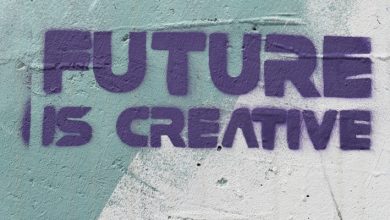How to Create and Sell NFTs on Different Platforms

- Understanding NFTs: A Beginner’s Guide
- Choosing the Right Platform for Your NFTs
- Step-by-Step Guide to Creating NFTs
- Tips for Marketing and Selling Your NFTs
- Exploring the Potential of NFTs in the Art World
- Navigating the Legal and Ethical Considerations of NFTs
Understanding NFTs: A Beginner’s Guide
NFTs, or non-fungible tokens, have gained significant popularity in recent years as a new way to buy, sell, and trade digital assets. Understanding NFTs is essential for anyone looking to create and sell them on different platforms. NFTs are unique digital tokens that represent ownership of a specific item or piece of content, such as art, music, videos, or even virtual real estate.
Unlike cryptocurrencies like Bitcoin or Ethereum, which are fungible and can be exchanged on a one-to-one basis, NFTs are one-of-a-kind and cannot be replicated. This uniqueness is what gives NFTs their underlying value and appeal to collectors and investors alike. When you create an NFT, you are essentially creating a digital certificate of ownership that is stored on a blockchain, a decentralized and secure digital ledger.
When it comes to selling NFTs, there are various platforms available where you can list your digital assets for sale. Some popular NFT marketplaces include OpenSea, Rarible, and Foundation. Each platform has its own set of rules and fees, so it’s essential to do your research and choose the one that best fits your needs and goals.
Before you start creating and selling NFTs, it’s crucial to understand the potential risks and challenges associated with this emerging technology. While NFTs can be a lucrative investment opportunity, they also come with their fair share of controversies, such as environmental concerns related to the energy consumption of blockchain networks.
Overall, NFTs offer a unique and exciting way to buy, sell, and collect digital assets. By understanding the basics of NFTs and how to create and sell them on different platforms, you can take advantage of this growing trend and potentially profit from the digital art and collectibles market.
Choosing the Right Platform for Your NFTs
When it comes to creating and selling NFTs, choosing the right platform is crucial for success. There are several factors to consider when selecting a platform for your NFTs. One of the most important things to look at is the fees associated with each platform. Some platforms charge higher fees than others, so it’s essential to do your research and find one that aligns with your budget.
Another factor to consider is the audience that each platform attracts. Some platforms cater to a more niche audience, while others have a broader reach. Depending on the type of NFTs you are creating, you may want to choose a platform that aligns with your target audience.
Additionally, consider the user interface and ease of use of each platform. Some platforms are more user-friendly than others, making it easier for you to upload and sell your NFTs. It’s essential to choose a platform that you feel comfortable using and that meets your needs as an artist or creator.
Overall, the key to success in creating and selling NFTs is choosing the right platform for your needs. By considering factors such as fees, audience, and user interface, you can select a platform that will help you reach your goals and maximize your success in the NFT market.
Step-by-Step Guide to Creating NFTs
To create and sell NFTs on different platforms, you can follow a step-by-step guide to ensure a smooth process. First, you need to choose a platform that supports NFT creation and sales, such as OpenSea, Rarible, or Mintable. Once you have selected a platform, you can start the process of creating your NFT.
The next step is to create your digital artwork or collectible that you want to turn into an NFT. This could be a piece of digital art, a music file, a video clip, or any other digital asset that you want to tokenize. Make sure that your artwork is unique and of high quality to attract potential buyers.
After creating your digital asset, you will need to mint it as an NFT on the platform of your choice. Minting an NFT involves uploading your digital asset to the platform, adding metadata such as the title, description, and properties of the NFT, and paying a minting fee. Once your NFT is minted, it will be added to the blockchain and become available for sale.
Finally, you can list your NFT for sale on the platform and set a price for it. You can also choose to sell your NFT through an auction or a fixed-price sale. Once a buyer purchases your NFT, the ownership of the digital asset will be transferred to them, and you will receive the payment in cryptocurrency.
By following this step-by-step guide, you can create and sell NFTs on different platforms and potentially earn money from your digital creations. Remember to promote your NFTs on social media and other channels to reach a wider audience and increase your chances of making a sale.
Tips for Marketing and Selling Your NFTs
When it comes to marketing and selling your NFTs, there are several tips to keep in mind to maximize your success. Here are some key strategies to help you promote and sell your digital assets:
- Utilize social media platforms to showcase your NFTs and engage with potential buyers. Platforms like Twitter, Instagram, and TikTok can be powerful tools for reaching a wide audience.
- Collaborate with other artists and creators to cross-promote each other’s work and expand your reach. Building a network within the NFT community can help you gain visibility and attract more buyers.
- Participate in NFT marketplaces and online auctions to showcase your work to a targeted audience of collectors and investors. Platforms like OpenSea, Rarible, and Foundation are popular choices for selling NFTs.
- Create a strong brand identity for your NFTs to differentiate yourself from other artists and stand out in a crowded marketplace. Develop a unique style and aesthetic that resonates with your target audience.
- Offer limited editions or exclusive collections to create scarcity and drive up demand for your NFTs. Limited availability can increase the perceived value of your digital assets and attract collectors looking for rare pieces.
By following these tips and implementing effective marketing strategies, you can increase the visibility and desirability of your NFTs, ultimately leading to more sales and success in the digital art market.
Exploring the Potential of NFTs in the Art World
Exploring the potential of Non-Fungible Tokens (NFTs) in the art world opens up a whole new realm of possibilities for artists and collectors alike. NFTs allow artists to create unique digital assets that can be bought and sold on various platforms, providing a new way for creators to monetize their work. By tokenizing their art, artists can establish ownership and scarcity in the digital space, making their pieces more valuable to collectors.
One of the key benefits of NFTs in the art world is the ability to create verifiable scarcity. Unlike traditional digital art, which can be easily replicated and shared, NFTs are one-of-a-kind assets that are recorded on a blockchain, ensuring their authenticity and provenance. This scarcity can drive up the value of an artist’s work, as collectors compete to own a piece of digital art that is truly unique.
Furthermore, NFTs provide a new way for artists to engage with their audience and build a community around their work. By selling NFTs directly to collectors, artists can establish a direct relationship with their fans, bypassing traditional galleries and intermediaries. This direct connection can lead to increased support for the artist and a more sustainable income stream.
Navigating the Legal and Ethical Considerations of NFTs
Navigating the legal and ethical considerations of NFTs is crucial for creators and sellers in the digital art world. When creating and selling NFTs on various platforms, it is essential to understand the legal implications and ethical responsibilities that come with it.
One of the key legal considerations is copyright infringement. Creators must ensure that they have the rights to the content they are tokenizing as an NFT. This includes obtaining permission from any third parties involved in the creation process. Additionally, creators should be aware of any potential licensing issues that may arise when selling their NFTs.
Another important aspect to consider is the potential for fraud in the NFT space. Due to the decentralized nature of blockchain technology, it can be challenging to verify the authenticity of an NFT. Creators and sellers should take steps to protect themselves and their buyers from fraudulent activity.
Ethical considerations also play a significant role in the world of NFTs. Creators should be transparent about the origin of their work and any associated rights. They should also consider the environmental impact of minting NFTs, as the process can be energy-intensive.
Overall, creators and sellers of NFTs must navigate these legal and ethical considerations carefully to ensure a positive and sustainable experience for all parties involved. By staying informed and proactive, individuals can participate in the NFT market responsibly and ethically.



